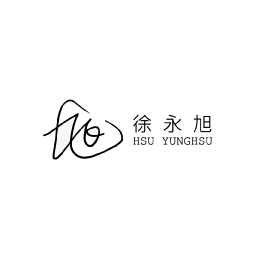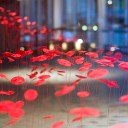










以身体做为创作主体的概念,投注高度的决心与毅力至艺术创作中,强调身体与作品间的对话,以主体与身体融为一体的方式面对创作材质,借由身体的知觉、触觉与痛觉,在现有以土为主的结构之中和世界相互流动、作用 并与之形构出作品。
艺术家亲自以繁复以及高度劳动的工序,与环境、气候、烧制等完全地与作品结合,只为呈现出最纯粹的雕塑作品。经过不断解构与建构的过程,将本为土的厚重本质,捏塑出极为轻薄柔和的线条及形态,如此 的反差成就其创作的新观点,出现了令人叹为观止,以泥土创作中难见 的「大」作品及「薄」作品。而徐永旭以「超越,由生命超越生命,由艺 术创作超越艺术创作,由艺术创作超越生命」的态度为出发点,不断地自 我挑战,期待超越每次在生命与艺术创作路程上的极限。
徐永旭将极其专注的自我意识、身体及生命灌注在作品中,每件作品皆以繁复的工法,不断地以流动、重复、堆积的方式,将材质经过艺术家身体性的转移,仿佛一个生物的本能般,不断交织、相叠,筑著「巢」、构出「窍」,由艺术家身体繁殖而出,却脱不去思维在本能间的穿梭,构筑出无序列时间的空间。对徐永旭来说,那种生命感与存在感特别明显。
艺术家以绝对身体性的自发行为,转化其生命经验于作品中,有著强大的生物性与原生性,是一种增生蔓延的状态,是单一而整体、组合又分解、断裂却联结,一种生之欲望的勃发,一种窜出与峥嵘的涌出。
Treating the body as a creative tool, the artist devotes himself entirely to the field of ceramic art. He emphasizes the dialogue between the body and his artworks, and confronts the clay by integrating the subject with the body. His artworks are created on the basis of the interplay between the world and his perception as well as tactile and algesic senses within the clay-based structure. To create the purest and finest ceramic artworks, the artist not only adopted complex and painstaking procedures of production, but also exercised his superior skill in kilning. Through the constant process of deconstruction and reconstruction, he successfully transformed the heavy clay into delicate lines and shapes. His awe-inspiring, extraordinarily “large” but “thin” ceramic works, along with their charm of innovation, all resulted from such a refreshing contrast. Following his philosophy of life, that is, “transcending life through life, transcending artistic creation through artistic creation, and finally transcending life through artistic creation,” the artist keeps challenging himself, expecting to transcend the confines of life and artistic creation.
The artist embedded his whole self-consciousness, body and life deeply in his works. Each piece of his works is created under the complex procedures of constant fluidity, repetition, and accumulation. The artist physically transformed the materials, using his own biological instinct to interweave and superimpose them into “nests” and “apertures.” Born from the artist’s body, these nests and apertures tried in vain to resist their instinctive drive, and therefore created the spaces that drift from the divine realm of Chronos to that of Aion. As far as the artist is concerned, nothing is more genuine than the aforementioned senses of life and existence. The artist exemplifies the senses with the two exhibited works. By virtue of absolute corporeal and spontaneous actions, he applied his living experiences to transforming the originally heavy porcelain clay into his delicate ceramic artworks. They seem to be in a state of proliferation and sprawling. They are simultaneously the parts and the whole, associated yet decomposed, and fractured yet connected. They not only reflect the thriving of natural desires, but also symbolize the sudden and dramatic surge of creativity.




